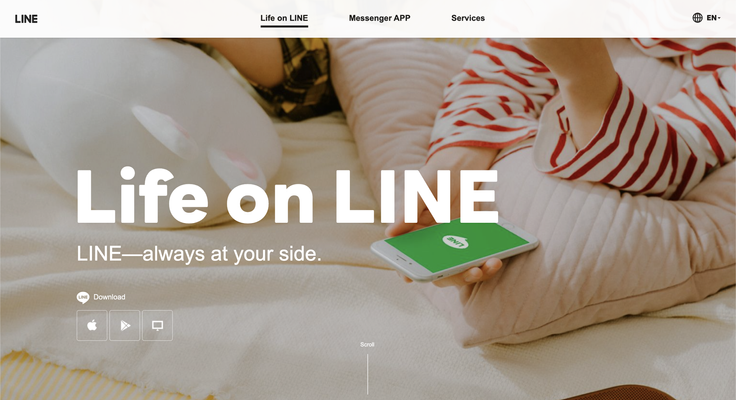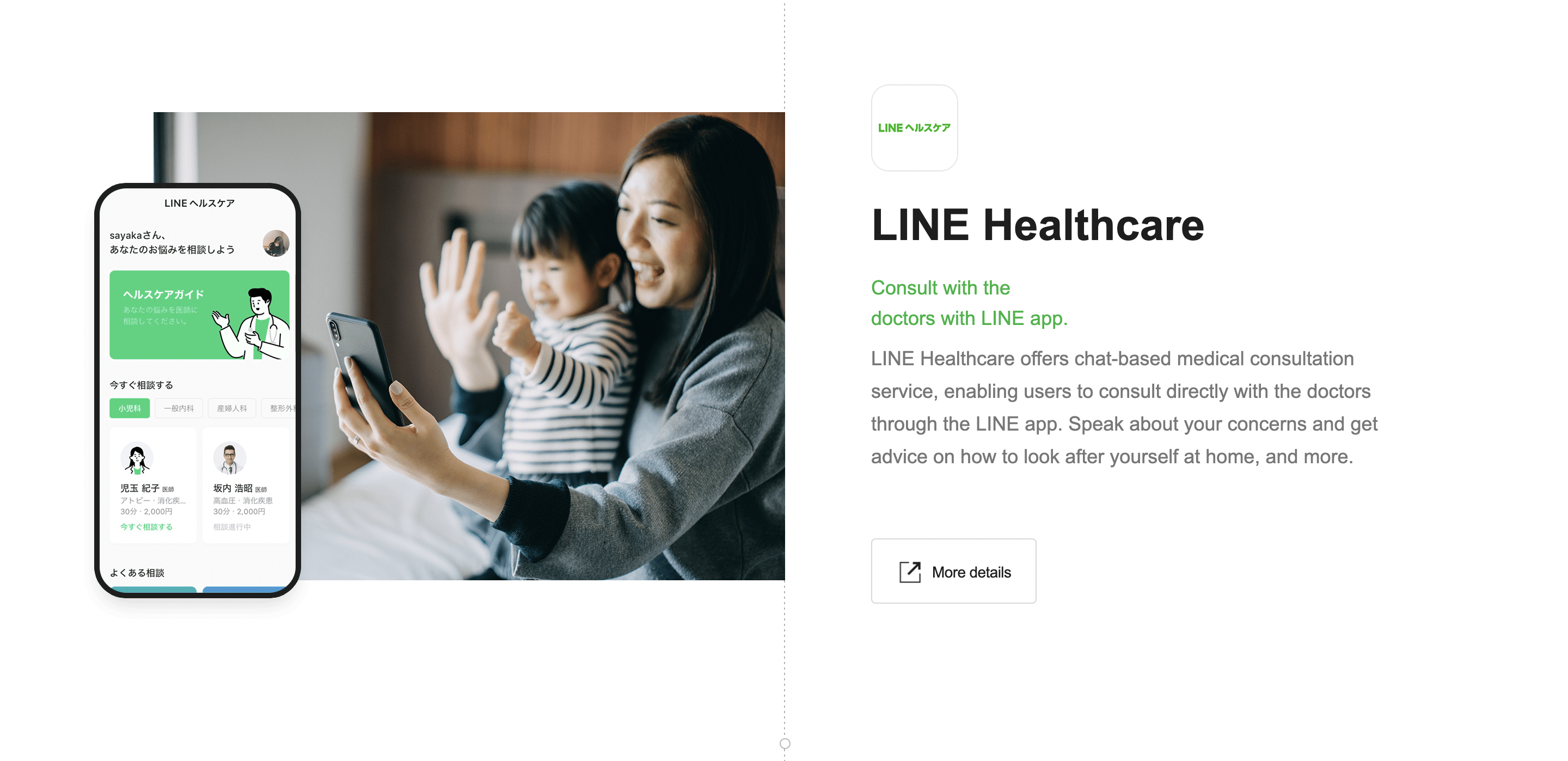You are reading Nuxt 2 docs. Head over nuxt.com for Nuxt 3 docs.
Line
LINE is a worldwide messaging platform with its main focus being in Asia and especially in Japan, where there are more than 86 million monthly active users, which is equivalent to about 70% of the Japanese population.

What is Line ?
LINE is a worldwide messaging platform with its main focus being in Asia and especially in Japan, where there are more than 86 million monthly active users, which is equivalent to about 70% of the Japanese population.
LINE provides many different services including messaging, news, financial services and more. It makes extensive use of front-end technology in mini-apps which exist within the main app. More than 100 front-end engineers have developed more than 50 applications built with React, Vue, Nuxt, and other frameworks.
Line uses Nuxt in HR applications such as its careers app, media applications such as apps for blogs and podcasts as well as in house applications.
How did you discover Nuxt?
Before I joined LINE, I encountered Nuxt when I was simultaneously involved in many different job applications.
Nuxt has all the elements necessary so that you don't have a chaotic Vue.js application architecture, and we continue to be impressed by it.
We have been using Nuxt ever since, and LINE as a whole has been using Nuxt in various cases such as in its careers app, media applications such as apps for blogs and podcasts as well as in house applications.
Why did you choose Nuxt as your frontend framework?
Nuxt provides the foundation for cleaner and amazing application architectures like never seen before ever. Nuxt’s convention not only makes engineers more productive, but also prevents noisy bikeshed discussions. We use Nuxt to deliver valuable products to our customers rapidly.

Are you using dynamic or static rendering? Why?
We use both. When our products require realtime generation of HTML meta attribute (e.g. SEO, OGP), we use dynamic rendering using SSR. If not, we use static rendering using Single Page Application mode.
In addition, for internal documents, we use the nuxt/content module with static site generation. Using this we have been able to create efficient documentation for our developers which has been much more readable than just writing markdown in Github.
What is your favorite feature?
I really like how Nuxt gives you Convention over Configuration which makes it very efficient, but among the inherent features, I like the plugin system and the versatile build options.
In Vue 2.x application development, managing global objects independent of the Vuex Store was always a headache for us. The Provide/Inject feature solved a lot of problems because of its easy-to-use and type friendly API.
Nuxt is also packed with successfully managed plugins and modules, and the features that they have are indispensable for us.
On the other hand, the versatile build options are also a great attraction. With Nuxt, we can ensure that we are writing universal JavaScript naturally, and we can smoothly switch from Single Page Applications to dynamic rendering or full static generation as needed.
Do you have performances benchmarks before & after using Nuxt?
Sorry, we’re mainly using Nuxt for new development, so we can’t make a direct comparison with Vue.js. However, we are sure that Nuxt is bringing great value to us.
Would you recommend Nuxt?
Of course. Nuxt is the option for all Vue.js application developers. If you’re reading this interview and you haven’t used Nuxt yet, you should try it now. It will surely help you solve many of the challenges you are having and help your product bring value to the market faster.